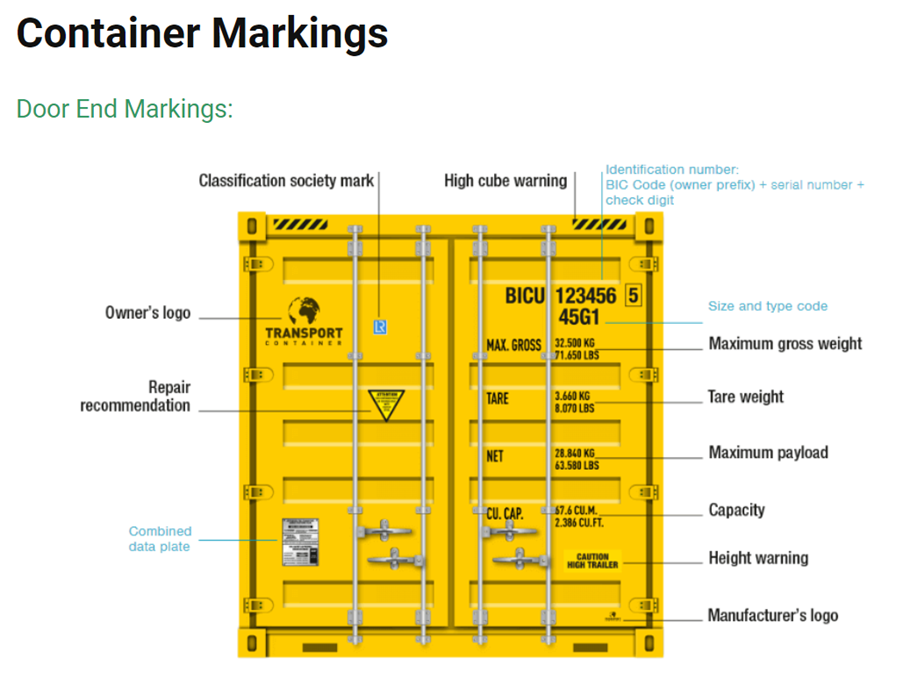Here's a comprehensive guide on all the information that can be found on maritime containers and how to read them:
- Container Number:
- The container number is a unique identifier assigned to each container.
- It consists of four letters followed by seven numbers, including a check digit at the end.
- The container number helps track and identify the container throughout its journey.
- Size and Type:
- Containers come in various sizes, such as 20 feet (TEU), 40 feet (FEU), or 45 feet.
- The container's size is typically indicated on the doors or sides of the container.
- Common types include dry containers, refrigerated containers (reefers), open-top containers, flat racks, tank containers, and more.
- Maximum Gross Weight:
- The maximum gross weight refers to the total weight of the loaded container, including cargo, packaging, and container tare weight.
- It is usually displayed on the container's door or CSC (Convention for Safe Containers) plate.
- Tare Weight:
- The tare weight represents the weight of the empty container without any cargo or packaging.
- It is often indicated on the container's door or CSC plate.
- To calculate the net weight of the cargo, subtract the tare weight from the gross weight.
- Payload Capacity:
- The payload capacity is the maximum weight of cargo that can be loaded into the container.
- It is calculated by subtracting the tare weight from the maximum gross weight.
- CSC Plate:
- The CSC plate is a safety certificate plate attached to the container, indicating its compliance with the International Convention for Safe Containers.
- The plate includes information such as the container's maximum gross weight, allowable stacking weight, and test dates for the container's integrity.
- Owner/Operator Code:
- The owner/operator code identifies the company or organization that owns or operates the container.
- It is usually represented by three letters and can be found on the container's sides or doors.
- ISO Code:
- The ISO code indicates the country of registration or manufacture of the container.
- It consists of three letters and can be found on the container's sides or doors.
- Examples include USA for the United States, CHN for China, DEU for Germany, etc.
- Stencils and Markings:
- Containers may have stencils and markings providing additional information.
- These include weight labels, which indicate the container's weight when empty and when loaded, as well as hazardous materials labels, indicating the presence of dangerous goods.
Reading and interpreting these markings and information on maritime containers is crucial for efficient and safe handling, tracking, and transportation. It allows stakeholders to ensure compliance, calculate cargo weights accurately, and understand the container's specifications and capabilities.

